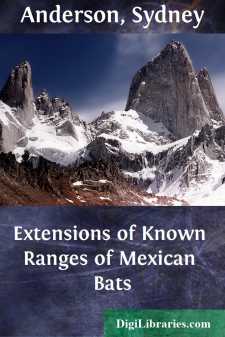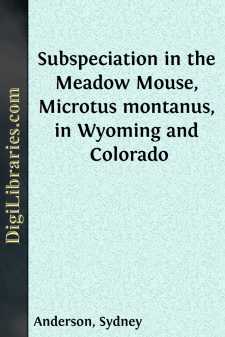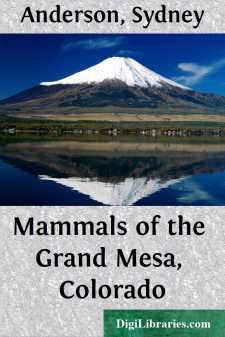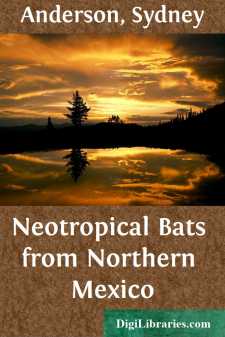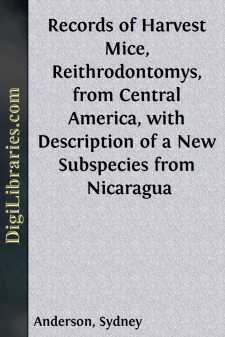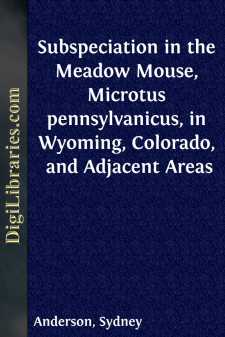Categories
- Antiques & Collectibles 13
- Architecture 36
- Art 48
- Bibles 22
- Biography & Autobiography 813
- Body, Mind & Spirit 142
- Business & Economics 28
- Children's Books 17
- Children's Fiction 14
- Computers 4
- Cooking 94
- Crafts & Hobbies 4
- Drama 346
- Education 46
- Family & Relationships 57
- Fiction 11829
- Games 19
- Gardening 17
- Health & Fitness 34
- History 1377
- House & Home 1
- Humor 147
- Juvenile Fiction 1873
- Juvenile Nonfiction 202
- Language Arts & Disciplines 88
- Law 16
- Literary Collections 686
- Literary Criticism 179
- Mathematics 13
- Medical 41
- Music 40
- Nature 179
- Non-Classifiable 1768
- Performing Arts 7
- Periodicals 1453
- Philosophy 64
- Photography 2
- Poetry 896
- Political Science 203
- Psychology 42
- Reference 154
- Religion 513
- Science 126
- Self-Help 84
- Social Science 81
- Sports & Recreation 34
- Study Aids 3
- Technology & Engineering 59
- Transportation 23
- Travel 463
- True Crime 29
Extensions of Known Ranges of Mexican Bats
by: Sydney Anderson
Description:
Excerpt
Incidental to studies of speciation of North American mammals, made possible by assistance from the National Science Foundation and the Kansas University Endowment Association, a number of bats have been taken beyond the limits of their previously known geographic ranges. Pending the completion of more detailed faunal accounts, these notes are published so that the distributional records will be available to interested students of Mexican mammals.
Many of these bats are essentially tropical and the new records here reported, extend the known geographic ranges to the northward on either the east or the west coast of Mexico. Continued collecting, especially by the intensive application of a variety of methods including the use of mist nets, in the northern parts of the zone of tropical vegetation can be expected to yield other species of tropical bats beyond the limits of the ranges now known. Catalogue numbers cited in parentheses are those of the Museum of Natural History.
Chilonycteris psilotis Dobson.—Six specimens (36426-36431) taken 7 mi. W and ½ mi. S Santiago, at sea level, Colima, by J. R. Alcorn, on March 17, 1950, extend the known range of this species 330 miles westward from the most northwestern recorded occurrence at Alpuyeca, Morelos (Davis and Russell, 1952:234). Use of the name psilotis is explained by de la Torre (1955:697).
Chilonycteris parnellii mexicana Miller.—One specimen (54934) from 10 mi. W, 2 mi. S Piedra, 1200 ft., Tamaulipas, taken by Gerd H. Heinrich, on June 13, 1953, extends the known range of this species 76 miles east-northeast (Goodwin, 1954:4), previously the most northern recorded occurrence in northeastern Mexico. Thirty other specimens have been taken from four additional localities between El Pachón and the place 10 mi. W, 2 mi. S Piedra.
Pteronotus davyi fulvus (Thomas).—Ten specimens (57525-57534) from Rancho Santa Rosa, 25 km. N, 13 km. W Cd. Victoria, 260 meters, Tamaulipas, taken by W. Schaldach, V. Grissino, and R. Grimsley, from December 26, 1953, to January 5, 1954, extend the known range of this species 360 miles northward from Mirador, Veracruz (Davis and Russell, 1952:235). Another specimen from Tamaulipas in our collection is from Rancho Pano Ayuctle, 8 mi. N Gómez Fárias, 300 feet.
Glossophaga soricina leachii (Gray).—Two specimens (54942-54943) from 16 mi. W, 3 mi. S Piedra, Tamaulipas, taken by Gerd H. Heinrich, on June 15, 1953, extend the known range of this species on the Gulf Coast of Mexico northward 60 miles from 5 mi. NE Antiguo Morelos, near El Pachón, Tamaulipas (de la Torre, 1954:114).
Anoura geoffroyi lasiopyga (Peters).—Three specimens (36574-36576) from 2 mi. SE Jalcocotán, 3000 ft., Nayarit, the first records for the state, taken by J. R. Alcorn, on February 15, 1950, extend the known range of the species 50 miles northward from San Sebástian, Jalisco (Sanborn, 1933:27).
Choeronycteris mexicana Tschudi.—Three specimens (60176-60178) from 4 km. N Joya Verde, near Huisachal, 4000 ft., Tamaulipas, taken by W. Schaldach, on July 17, 1954, extend the known range of this species eastward into the state of Tamaulipas. Eastern marginal records in northeastern Mexico were 1 mi. S and 4 mi. W Bella Unión, 7000 ft., Coahuila (Baker, 1956:174), and Hacienda CapulÃn, San Luis Potosà (Dalquest, 1953:27).
Centurio senex Gray.—One specimen (54958) from 14 mi. W, 3 mi. S Piedra, Tamaulipas, extends the known range of the species 58 miles northward from Pano Ayuctle, near Gómez Fárias, Tamaulipas (de la Torre, 1954:114)....


